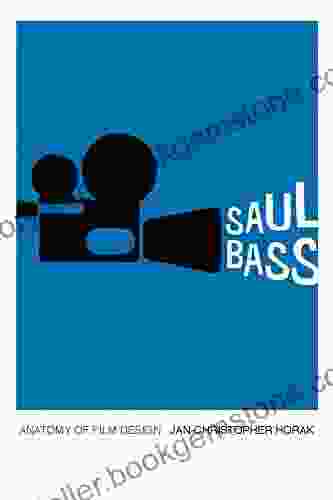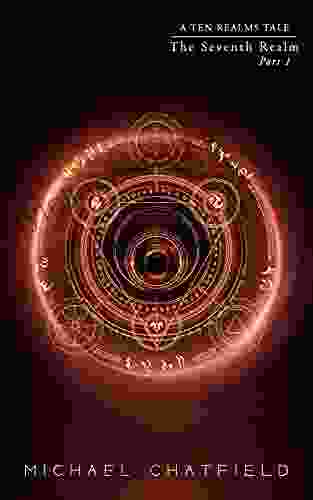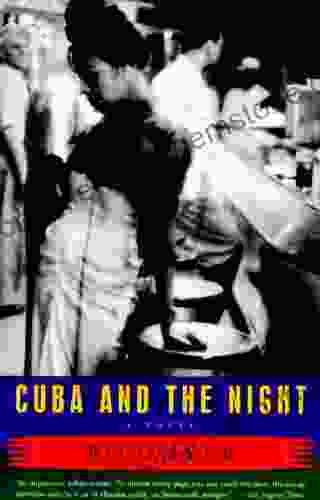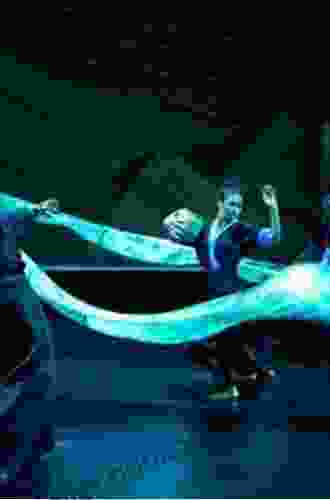Saul Bass: Anatomy of Film Design Screen Classics

Saul Bass was an American graphic designer and filmmaker who is best known for his groundbreaking work in film title design. His innovative and iconic designs helped to shape the visual identity of some of the most memorable films of the 20th century, including Vertigo, North by Northwest, and Psycho.
Bass was born in New York City in 1920. He studied at the Art Students League and the Pratt Institute, where he developed a strong foundation in graphic design. In the early 1950s, he began working as a freelance designer, creating logos, posters, and other promotional materials for a variety of clients. In 1954, he was hired by Alfred Hitchcock to design the title sequence for Vertigo.
4.6 out of 5
| Language | : | English |
| File size | : | 7907 KB |
| Text-to-Speech | : | Enabled |
| Screen Reader | : | Supported |
| Enhanced typesetting | : | Enabled |
| Word Wise | : | Enabled |
| Print length | : | 460 pages |
Bass's title sequence for Vertigo is a masterpiece of graphic design. It features a series of dizzying, spiraling patterns that create a sense of vertigo and disorientation. The sequence perfectly captures the film's themes of obsession and madness, and it has become one of the most iconic title sequences in film history.
Bass went on to design title sequences for a number of other classic films, including North by Northwest, Psycho, Spartacus, and Goodfellas. His work is characterized by its simplicity, elegance, and emotional resonance. He often used abstract shapes and patterns to create a sense of mood and atmosphere, and his title sequences often foreshadowed the themes and events of the films they introduced.
In addition to his work in film, Bass also designed logos and other corporate identities for a variety of companies, including AT&T, United Airlines, and Minolta. He also directed several short films and documentaries, including the Academy Award-winning Why Man Creates.
Bass died in Los Angeles in 1996 at the age of 75. He is considered one of the most influential graphic designers of the 20th century, and his work continues to inspire designers and filmmakers today.
The Anatomy of a Saul Bass Film Title Sequence
Saul Bass's film title sequences are typically characterized by the following elements:
* **Simplicity:** Bass's designs are often simple and elegant, with a focus on negative space and clean lines. * **Abstract shapes and patterns:** Bass often used abstract shapes and patterns to create a sense of mood and atmosphere. * **Emotional resonance:** Bass's title sequences often foreshadowed the themes and events of the films they introduced, creating an emotional connection with the audience. * **Technical innovation:** Bass was always pushing the boundaries of design, and his title sequences often featured innovative and groundbreaking techniques.
Here is a more detailed look at some of the key elements of Bass's most iconic film title sequences:
Vertigo (1958)
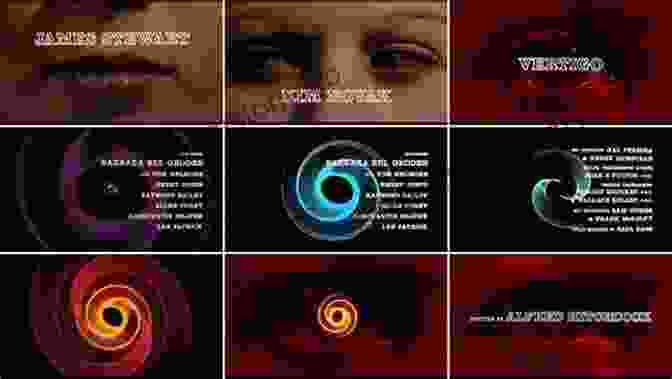
Bass's title sequence for Vertigo is a masterpiece of graphic design. It features a series of dizzying, spiraling patterns that create a sense of vertigo and disorientation. The sequence perfectly captures the film's themes of obsession and madness, and it has become one of the most iconic title sequences in film history.
North by Northwest (1959)

Bass's title sequence for North by Northwest is a playful and suspenseful tour de force. It features a series of animated sequences that depict the film's protagonist, Cary Grant, being pursued by a mysterious organization. The sequence is full of energy and excitement, and it perfectly captures the film's sense of adventure and suspense.
Psycho (1960)
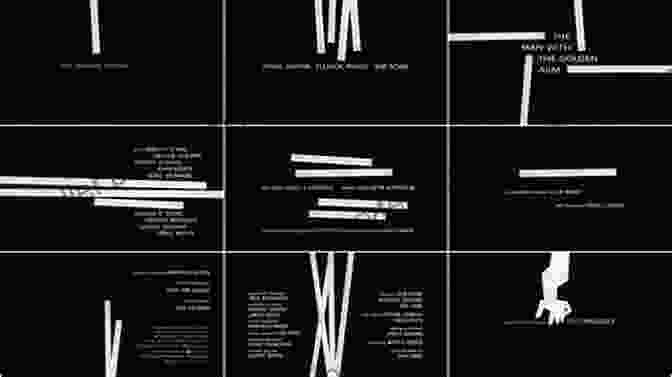
Bass's title sequence for Psycho is one of the most iconic and suspenseful in film history. It features a series of black-and-white images that depict the film's protagonist, Marion Crane, being stalked and killed by the motel's manager, Norman Bates. The sequence is full of tension and dread, and it perfectly sets the tone for the film's dark and twisted tale.
Spartacus (1960)
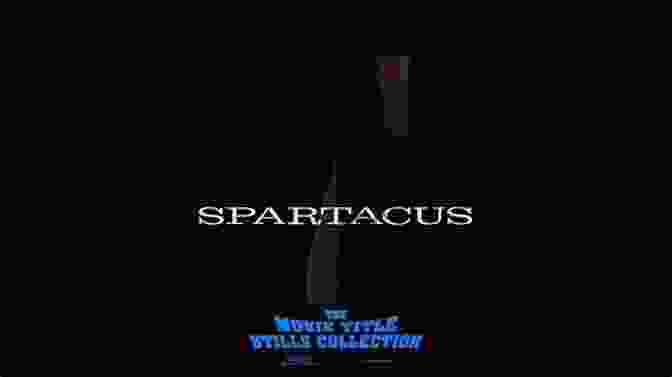
Bass's title sequence for Spartacus is a powerful and epic masterpiece. It features a series of images that depict the film's protagonist, Spartacus, leading a slave revolt against the Roman Empire. The sequence is full of energy and excitement, and it perfectly captures the film's themes of freedom and rebellion.
Goodfellas (1990)
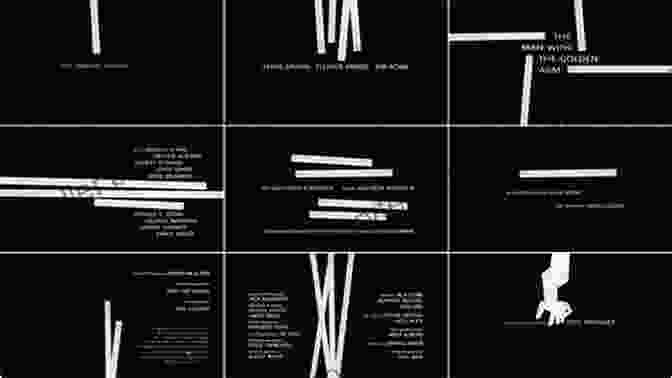
Bass's title sequence for Goodfellas is a gritty and realistic depiction of the film's criminal underworld. It features a series of images that depict the film's protagonists, Henry Hill and Jimmy Conway, as they rise through the ranks of the mob. The sequence is full of tension and violence, and it perfectly captures the film's dark and unforgiving world.
Saul Bass's Legacy
Saul Bass is considered one of the most influential graphic designers of the 20th century. His work in film title design helped to shape the visual identity of some of the most memorable films of all time. His innovative and iconic designs continue to inspire designers and filmmakers today.
Here are some of the key takeaways from Saul Bass's work:
* **The importance of simplicity and elegance:** Bass's designs are often simple and elegant, with a focus on negative space and clean lines. This approach allows his designs to be easily recognizable and memorable. * **The power of abstract shapes and patterns:** Bass often used abstract shapes and patterns to create a sense of mood and atmosphere. This technique can be used to create a variety of different effects, from a sense of excitement and adventure to a sense of dread and suspense. * **The importance of emotional resonance:** Bass's title sequences often foreshadowed the themes and events of the films they introduced, creating an emotional connection with the audience. This technique can be used to draw the audience into the film and to create a lasting impression. * **The importance of technical innovation:** Bass was always pushing the boundaries of design, and his title sequences often featured innovative and groundbreaking techniques. This approach allowed him to create truly unique and memorable designs that stood out from the crowd.
4.6 out of 5
| Language | : | English |
| File size | : | 7907 KB |
| Text-to-Speech | : | Enabled |
| Screen Reader | : | Supported |
| Enhanced typesetting | : | Enabled |
| Word Wise | : | Enabled |
| Print length | : | 460 pages |
Do you want to contribute by writing guest posts on this blog?
Please contact us and send us a resume of previous articles that you have written.
 Best Book
Best Book Page Flip
Page Flip Bookshelf
Bookshelf Literary loom
Literary loom Chapter
Chapter Bookish
Bookish PageTurner
PageTurner Bibliophile
Bibliophile Story
Story Inkwell
Inkwell Bookworm
Bookworm Labyrinth
Labyrinth Plot Twist
Plot Twist Prose
Prose Paperback
Paperback Storyteller
Storyteller Sanctuary
Sanctuary Fiction
Fiction Reading
Reading Chronicle
Chronicle Read
Read Sarah Winnemucca Hopkins
Sarah Winnemucca Hopkins Bill White
Bill White Ashlee Vance
Ashlee Vance Lou Sutton
Lou Sutton Jane Sullivan
Jane Sullivan Elena M Watson
Elena M Watson Koji A Dae
Koji A Dae H Dolmetsch
H Dolmetsch Annette Dozier
Annette Dozier Beth Haslam
Beth Haslam Mark Edward Harris
Mark Edward Harris James Maskalyk
James Maskalyk Davida Schulman
Davida Schulman Marlene Wagman Geller
Marlene Wagman Geller Anne Manera
Anne Manera De Andrea
De Andrea Nick Cole
Nick Cole Stewart James
Stewart James Arielle Eckstut
Arielle Eckstut Ken Seeroi
Ken Seeroi Brendan Edwards
Brendan Edwards Debbie Macomber
Debbie Macomber Lutishia Lovely
Lutishia Lovely Kristen Ashley
Kristen Ashley Mimi Kwa
Mimi Kwa Joe Russo
Joe Russo W A Bentley
W A Bentley Julie Nelson Davis
Julie Nelson Davis Martin Cruz Smith
Martin Cruz Smith Talia Beckett
Talia Beckett Luke Nguyen
Luke Nguyen Philip Tyler
Philip Tyler Arthur Bartow
Arthur Bartow Pankaj Mishra
Pankaj Mishra David Consuegra
David Consuegra Benjamin Percy
Benjamin Percy Richard Killeen
Richard Killeen Woody Allen
Woody Allen R G Collingwood
R G Collingwood Arthur Miller
Arthur Miller Arthur C Clarke
Arthur C Clarke Peter Watts
Peter Watts Jay Allan
Jay Allan Arlo Adams
Arlo Adams Katja Pantzar
Katja Pantzar Austin Howe
Austin Howe Sarah Crafts
Sarah Crafts S H Jucha
S H Jucha Eric Broudy
Eric Broudy Asali Solomon
Asali Solomon Scott Westerfeld
Scott Westerfeld Joseph Wambaugh
Joseph Wambaugh Anthony Ryder
Anthony Ryder Arthur Murray
Arthur Murray Morgan Rogers
Morgan Rogers John Woolf
John Woolf Dave Bartell
Dave Bartell Ar Corbin
Ar Corbin Quentin Tarantino
Quentin Tarantino Yuk Hui
Yuk Hui Nancy Lee Mccaskill
Nancy Lee Mccaskill Suzanne Fredericq
Suzanne Fredericq Todd Barry
Todd Barry Scott M Madden
Scott M Madden Sonia Misra
Sonia Misra Edgar Rice Burroughs
Edgar Rice Burroughs Scott Hughey
Scott Hughey Sue Miller
Sue Miller Tony Randgaard
Tony Randgaard Barbara Demarco Barrett
Barbara Demarco Barrett Valerie Biden Owens
Valerie Biden Owens Arielle Silverman Ph D
Arielle Silverman Ph D Anthony Jones
Anthony Jones New Edition Kindle Edition
New Edition Kindle Edition Kalyn Franke
Kalyn Franke James Rosone
James Rosone Elizabeth Bard
Elizabeth Bard Michael Jan Friedman
Michael Jan Friedman Patrick Rothfuss
Patrick Rothfuss Zeneba Bowers
Zeneba Bowers Ashley Mahlberg
Ashley Mahlberg Tiffany Roberts
Tiffany Roberts Jane Yolen
Jane Yolen Karen Ordahl Kupperman
Karen Ordahl Kupperman Approach Guides
Approach Guides S C Jensen
S C Jensen Ruth Wariner
Ruth Wariner John Triptych
John Triptych Margaret Scott
Margaret Scott Myrnoska Scott
Myrnoska Scott Linda Furiya
Linda Furiya Fergal Keane
Fergal Keane Tim Gunn
Tim Gunn Jason Louis
Jason Louis D Levesque
D Levesque Vernor Vinge
Vernor Vinge Anwei Skinsnes Law
Anwei Skinsnes Law T R Todd
T R Todd Fig Taylor
Fig Taylor Heather Vogel Frederick
Heather Vogel Frederick Jay Boyce
Jay Boyce Betty Reynolds
Betty Reynolds Deborah Paris
Deborah Paris Robert Graysmith
Robert Graysmith Anthony James
Anthony James Juliette Sobanet
Juliette Sobanet Joseph Mcbride
Joseph Mcbride Pico Iyer
Pico Iyer Annemarie Strehl
Annemarie Strehl Martin Kemp
Martin Kemp Shami Stovall
Shami Stovall Robert D Kaplan
Robert D Kaplan Janet Farnsworth
Janet Farnsworth Miss Jenesequa
Miss Jenesequa Phil Doran
Phil Doran John H Groberg
John H Groberg Peter Jazwinski
Peter Jazwinski N L Hudson
N L Hudson Rosemary Sullivan
Rosemary Sullivan Yasmin Angoe
Yasmin Angoe Thomas M Hill
Thomas M Hill Paul Holt
Paul Holt Carl Stubblefield
Carl Stubblefield Anthony C Winkler
Anthony C Winkler Cynthia Winton Henry
Cynthia Winton Henry Lorna Luft
Lorna Luft Richard Pikesley
Richard Pikesley Sara Paretsky
Sara Paretsky Robert V Camuto
Robert V Camuto Michael Fleishman
Michael Fleishman Anton Roux
Anton Roux Anthony Ryan
Anthony Ryan Satyajit Ray
Satyajit Ray Apsley Cherry Garrard
Apsley Cherry Garrard Tia Williams
Tia Williams Christopher Simmons
Christopher Simmons Keller Easterling
Keller Easterling Kevin Mannens
Kevin Mannens B Russell Mcconkie
B Russell Mcconkie Jan Murphy
Jan Murphy Blackhorse Mitchell
Blackhorse Mitchell Jennifer Homans
Jennifer Homans Chris Cozen
Chris Cozen Ashley K Stoyanov Ojeda
Ashley K Stoyanov Ojeda Tamron Hall
Tamron Hall Vladimir London
Vladimir London Bear Heart
Bear Heart Rivers Solomon
Rivers Solomon Nicole Casey
Nicole Casey Zharel Anger
Zharel Anger Fifi O Neill
Fifi O Neill Atsons
Atsons Ashley Antoinette
Ashley Antoinette Meyer Berger
Meyer Berger Jun Maeda
Jun Maeda Erin Eitter Kono
Erin Eitter Kono Prenisha Aja
Prenisha Aja Aziz Shihab
Aziz Shihab Ashley Jaquavis
Ashley Jaquavis Ayn Rand
Ayn Rand Eric Campbell
Eric Campbell Doris Marjorie Moore
Doris Marjorie Moore David Larocca
David Larocca Artemisia Gentileschi
Artemisia Gentileschi Karen A Romanko
Karen A Romanko Patricia Williams
Patricia Williams Valerie Mckeehan
Valerie Mckeehan Edward Achorn
Edward Achorn Dennic Chunman Lo
Dennic Chunman Lo Maxine Leeds Craig
Maxine Leeds Craig Sheila O Flanagan
Sheila O Flanagan Joan Bess
Joan Bess Tara Wells
Tara Wells Frank Conroy
Frank Conroy Chris Weyers
Chris Weyers M N Forgy
M N Forgy John E Siers
John E Siers Samantha Hahn
Samantha Hahn Br Kingsolver
Br Kingsolver Scott Lerman
Scott Lerman Austin Channing Brown
Austin Channing Brown Avery Grey
Avery Grey Brian Butko
Brian Butko Smauggy Universe
Smauggy Universe Mary Renault
Mary Renault Anne Green Gilbert
Anne Green Gilbert Annemarie Bean
Annemarie Bean Kim Knox
Kim Knox Rob Schmitz
Rob Schmitz Colby Buzzell
Colby Buzzell Jaime Castle
Jaime Castle Jodi Ohl
Jodi Ohl Stephan Talty
Stephan Talty Elizabeth David
Elizabeth David Anne Mccaffrey
Anne Mccaffrey Owen Jones
Owen Jones Ernst Lehner
Ernst Lehner Lydia Wilen
Lydia Wilen Kirsten Anderson
Kirsten Anderson Eric Warren
Eric Warren Billy Connolly
Billy Connolly Noy
Noy Michael Betancourt
Michael Betancourt Brian W Smith
Brian W Smith Jan Morris
Jan Morris Armin Weber
Armin Weber Lizzie Williams
Lizzie Williams Christopher Sieving
Christopher Sieving Ariana Godoy
Ariana Godoy Mary Ann Scott
Mary Ann Scott Anton Tekshin
Anton Tekshin Sadhna Shanker
Sadhna Shanker Ray Bradbury
Ray Bradbury Anton Treuer
Anton Treuer Michael Evamy
Michael Evamy Dirk Hayhurst
Dirk Hayhurst Joseph Birchall
Joseph Birchall Anne Rice
Anne Rice Marta Mcdowell
Marta Mcdowell Caroline Montague
Caroline Montague Sarah Vallance
Sarah Vallance Antonia Fraser
Antonia Fraser Anne Richardson Williams
Anne Richardson Williams Stephen Moss
Stephen Moss Kim Erwin
Kim Erwin Ursa Dax
Ursa Dax Michael Kimmelman
Michael Kimmelman Armine Von Tempski
Armine Von Tempski B Ruby Rich
B Ruby Rich Vanessa Hua
Vanessa Hua Pearl Howie
Pearl Howie Steven Bradley
Steven Bradley Shugri Said Salh
Shugri Said Salh Jeffrey Vonk
Jeffrey Vonk Arthur H Buckley
Arthur H Buckley Doug Scott
Doug Scott Eugenio Barba
Eugenio Barba Mackinley Helm
Mackinley Helm Anne Keenan Higgins
Anne Keenan Higgins Blaze Ward
Blaze Ward Julian Stallabrass
Julian Stallabrass Kathy Kolbe
Kathy Kolbe Ansel Adams
Ansel Adams Ashley Fiolek
Ashley Fiolek Anne De Courcy
Anne De Courcy Saeed Jones
Saeed Jones Rebecca Kaye
Rebecca Kaye Rebecca Keegan
Rebecca Keegan Hannah Arendt
Hannah Arendt Joan Tollifson
Joan Tollifson Joan Baxter
Joan Baxter Leokadia Schmidt
Leokadia Schmidt Asimina Nteliou
Asimina Nteliou Kindle Edition
Kindle Edition Avery Blake
Avery Blake Jean Guerrero
Jean Guerrero Regina Held
Regina Held John Scarne
John Scarne Francesca Fiorani
Francesca Fiorani Christine Denniston
Christine Denniston Walt Bachman
Walt Bachman Bernadette Murphy
Bernadette Murphy Matthew A Goodwin
Matthew A Goodwin Wakefield Poole
Wakefield Poole Clare Therese Gray
Clare Therese Gray Detlev Henschel
Detlev Henschel Gloria Mattioni
Gloria Mattioni Tim Z Hernandez
Tim Z Hernandez Charles Nordhoff
Charles Nordhoff W Michael Blumenthal
W Michael Blumenthal Lorraine Caputo
Lorraine Caputo Ashleynicole
Ashleynicole R A Lafferty
R A Lafferty Gail Morin
Gail Morin Claire Devarrieux
Claire Devarrieux Jacqueline Rayner
Jacqueline Rayner Haruki Murakami
Haruki Murakami Nora Roberts
Nora Roberts Kaitlyn Greenidge
Kaitlyn Greenidge John Davidson
John Davidson Laura Davis Chanin
Laura Davis Chanin Obed Silva
Obed Silva Eileen Mcnamara
Eileen Mcnamara Anton Chekhov
Anton Chekhov Magi Nams
Magi Nams Ron Stocke
Ron Stocke Edgar Degas
Edgar Degas Ashley Brantley
Ashley Brantley Jason Frye
Jason Frye Pamela Cutter
Pamela Cutter Catherine E Mckinley
Catherine E Mckinley Paul Steinberg
Paul Steinberg Karen Mccartney
Karen Mccartney Darby English
Darby English Howard Dully
Howard Dully Beata Lubas
Beata Lubas Matthew Jm Carpenter
Matthew Jm Carpenter Arleta Pech
Arleta Pech Emma Read
Emma Read Binka Le Breton
Binka Le Breton Jane Monteith
Jane Monteith Madeleine Walker
Madeleine Walker John A Crespi
John A Crespi Michael Frank
Michael Frank Anthony M Amore
Anthony M Amore Olive Collins
Olive Collins Annette Gordon Reed
Annette Gordon Reed Kyunghee Pyun
Kyunghee Pyun Doug Peterson
Doug Peterson Colonial Williamsburg Foundation
Colonial Williamsburg Foundation Tracy Birdsall
Tracy Birdsall Haben Girma
Haben Girma Tamar Diana Wilson
Tamar Diana Wilson B B Thatcher
B B Thatcher David Deal
David Deal Anthony David
Anthony David Annette Kowalski
Annette Kowalski George Bird Grinnell
George Bird Grinnell Gina Rossi Armfield
Gina Rossi Armfield Jasper T Scott
Jasper T Scott Nancy Nicholson
Nancy Nicholson Anne Lister
Anne Lister Carolyn Jenkins
Carolyn Jenkins Peter Turchi
Peter Turchi Graham Fraser
Graham Fraser Peter James West
Peter James West Maureen T Corrigan
Maureen T Corrigan King Ellie
King Ellie John H Clark Iii
John H Clark Iii Angela Y Davis
Angela Y Davis Jonathan Strahan
Jonathan Strahan Arrigo Cipriani
Arrigo Cipriani Bwwm Love
Bwwm Love Arthur C Danto
Arthur C Danto Donald Murray
Donald Murray Oscar Zeta Acosta
Oscar Zeta Acosta Marina Garone Gravier
Marina Garone Gravier Jay Caspian Kang
Jay Caspian Kang Tay Mo Nae
Tay Mo Nae Anthony J Melchiorri
Anthony J Melchiorri Jim Steinmeyer
Jim Steinmeyer Asaf Messerer
Asaf Messerer Ari Seth Cohen
Ari Seth Cohen Nicholas Sansbury Smith
Nicholas Sansbury Smith Elizabeth Friendship
Elizabeth Friendship Hanife Hassan O Keeffe
Hanife Hassan O Keeffe Margaret Walker
Margaret Walker Franklin Horton
Franklin Horton Tony Hillerman
Tony Hillerman Avanti Centrae
Avanti Centrae Bella Martin
Bella Martin Xiaolu Guo
Xiaolu Guo James D Umbach
James D Umbach Colin Angus
Colin Angus Chris A Norton
Chris A Norton Clive Hallett
Clive Hallett Arne Dehli
Arne Dehli Jason Waguespack
Jason Waguespack Charles Taliaferro
Charles Taliaferro J R Osborn
J R Osborn Beverly Galeskas
Beverly Galeskas Diana Kupershmit
Diana Kupershmit Destiny Davis
Destiny Davis Howling Moon Books
Howling Moon Books Tony Peak
Tony Peak Nnedi Okorafor
Nnedi Okorafor Art Wolfe
Art Wolfe Linda Nagata
Linda Nagata Robert Beverly Hale
Robert Beverly Hale Jan Cohen Cruz
Jan Cohen Cruz Robert J Serling
Robert J Serling Antony Kamm
Antony Kamm Ava Archer
Ava Archer Gene D Phillips
Gene D Phillips Maria Venegas
Maria Venegas Anne Moody
Anne Moody Ashley Bristowe
Ashley Bristowe Annemieke Mein
Annemieke Mein Riva Lehrer
Riva Lehrer Deborah D Douglas
Deborah D Douglas Chloe Fox
Chloe Fox Bob Mayer
Bob Mayer Berlitz Publishing
Berlitz Publishing Geoff Schumacher
Geoff Schumacher Michael Chatfield
Michael Chatfield Tracy Franz
Tracy Franz Antoinette Nora Claypoole
Antoinette Nora Claypoole Karl Ove Knausgaard
Karl Ove Knausgaard Kris Jenner
Kris Jenner George Huppert
George Huppert Mary Kay Ricks
Mary Kay Ricks Carne Griffiths
Carne Griffiths Rebecca Serle
Rebecca Serle George Rathmell
George Rathmell Mark Baskinger
Mark Baskinger Anthony Slide
Anthony Slide B V Larson
B V Larson Tim Downs
Tim Downs Christopher Griffin
Christopher Griffin Cathy Curtis
Cathy Curtis Waldo Rodriguez
Waldo Rodriguez Joe Abercrombie
Joe Abercrombie Gayatri Gopinath
Gayatri Gopinath John Izbicki
John Izbicki Shonda Buchanan
Shonda Buchanan Anthony M Strong
Anthony M Strong Sari Botton
Sari Botton Lonely Planet
Lonely Planet Pat Cadigan
Pat Cadigan Wesley B Turner
Wesley B Turner Jose Antonio Salgado Alonso
Jose Antonio Salgado Alonso Nathan Deuel
Nathan Deuel Jt Sawyer
Jt Sawyer Wade Motawi
Wade Motawi Pat Hall
Pat Hall Chawadee Nualkhair
Chawadee Nualkhair Annie Ernaux
Annie Ernaux Annie Keary
Annie Keary Annette Freeman
Annette Freeman Arthur Conan Doyle
Arthur Conan Doyle Laurence Oliphant
Laurence Oliphant Zalmay Khalilzad
Zalmay Khalilzad Anne Frank
Anne Frank Jesse Martin
Jesse Martin Arnold Rampersad
Arnold Rampersad Ariel Dorfman
Ariel Dorfman Pamela Des Barres
Pamela Des Barres Chris Saper
Chris Saper Aubrey A Jones
Aubrey A Jones Axel Hacke
Axel Hacke Paul Brinkley Rogers
Paul Brinkley Rogers Anton Hager
Anton Hager Anne Hillerman
Anne Hillerman Anne Morrow Lindbergh
Anne Morrow Lindbergh Anthea Sharp
Anthea Sharp Oliver Mayes
Oliver Mayes Annette Insdorf
Annette Insdorf David E Stannard
David E Stannard Mary Maccracken
Mary Maccracken Michael Tucker
Michael Tucker Peter F Hamilton
Peter F Hamilton Robert Dugoni
Robert Dugoni Anne Sebba
Anne Sebba Laurel Ann Francis
Laurel Ann Francis Lian Hearn
Lian Hearn Antonis Tsagaris
Antonis Tsagaris Kao Kalia Yang
Kao Kalia Yang Elise Darcy
Elise Darcy Steven M Nolt
Steven M Nolt Lena Grey
Lena Grey August Wilson
August Wilson
Light bulbAdvertise smarter! Our strategic ad space ensures maximum exposure. Reserve your spot today!

 Julio CortázarUnleash the Wonders of Reykjavik and Southwest Iceland with Lonely Planet's...
Julio CortázarUnleash the Wonders of Reykjavik and Southwest Iceland with Lonely Planet's... Natsume SōsekiFollow ·12.8k
Natsume SōsekiFollow ·12.8k Edison MitchellFollow ·19.8k
Edison MitchellFollow ·19.8k Dennis HayesFollow ·8.7k
Dennis HayesFollow ·8.7k Nikolai GogolFollow ·13.2k
Nikolai GogolFollow ·13.2k Harold PowellFollow ·13k
Harold PowellFollow ·13k Xavier BellFollow ·2.4k
Xavier BellFollow ·2.4k Oliver FosterFollow ·8.1k
Oliver FosterFollow ·8.1k Adrien BlairFollow ·12k
Adrien BlairFollow ·12k

 Braden Ward
Braden WardMade to Order Robots and the Coming Revolution
Robots are becoming increasingly common...
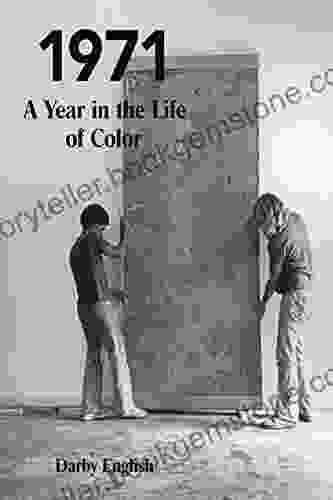
 Clay Powell
Clay Powell1971: A Year in the Life of Color
The year 1971 was a pivotal one for color....
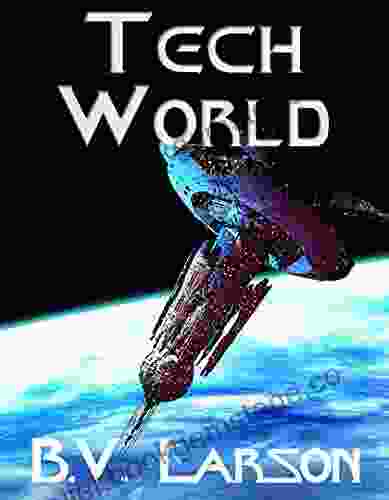
 Ralph Waldo Emerson
Ralph Waldo EmersonTech World's Undying Mercenaries: A Deep Dive into the...
In the ever-evolving landscape of the...

 Wade Cox
Wade CoxThe Ultimate Traveler's Guide to the People, Places, and...
Travel has always been a part of the human...

 Evan Simmons
Evan SimmonsA Comprehensive Guide: Uncovering Small Town Culinary...
: A Culinary Odyssey Beyond the City...
4.6 out of 5
| Language | : | English |
| File size | : | 7907 KB |
| Text-to-Speech | : | Enabled |
| Screen Reader | : | Supported |
| Enhanced typesetting | : | Enabled |
| Word Wise | : | Enabled |
| Print length | : | 460 pages |


